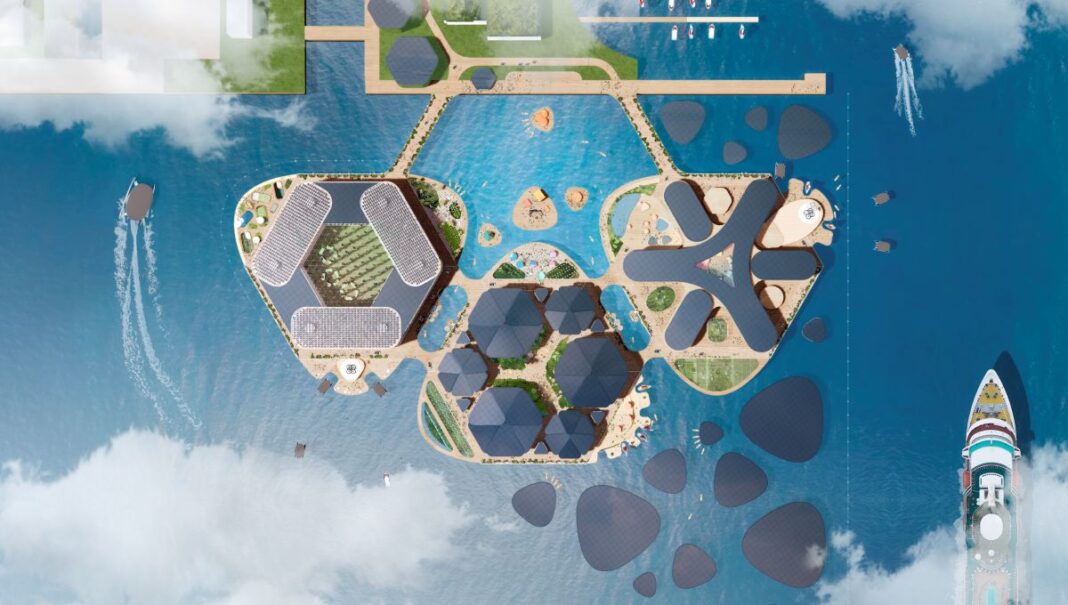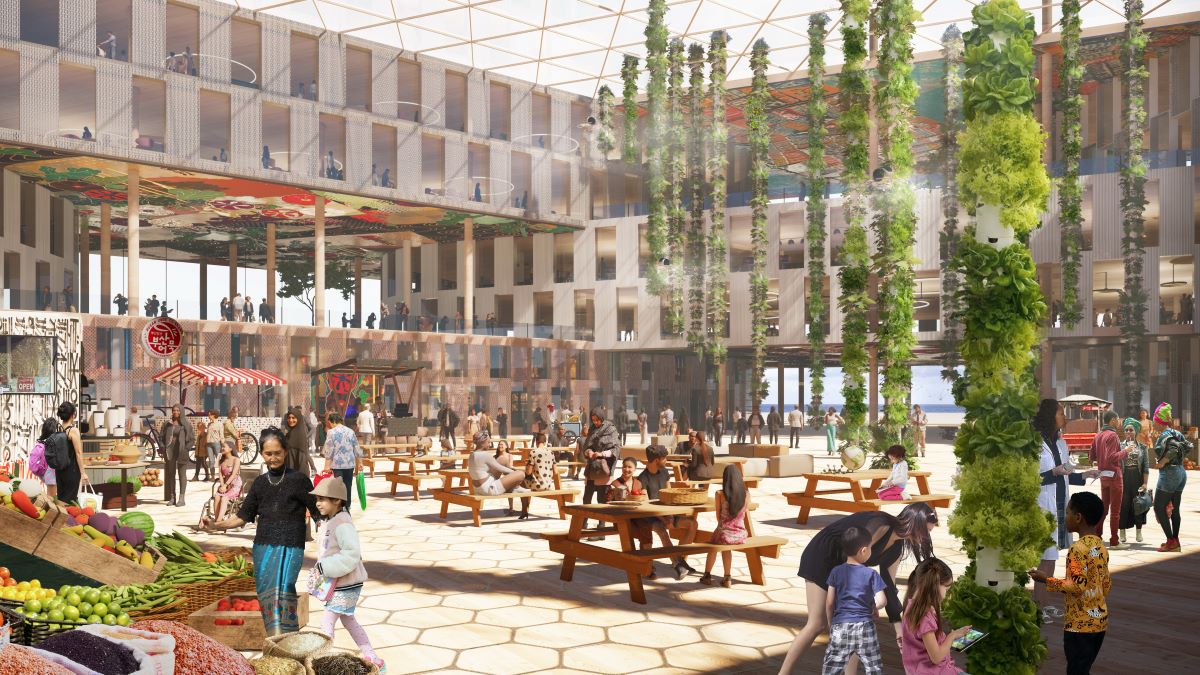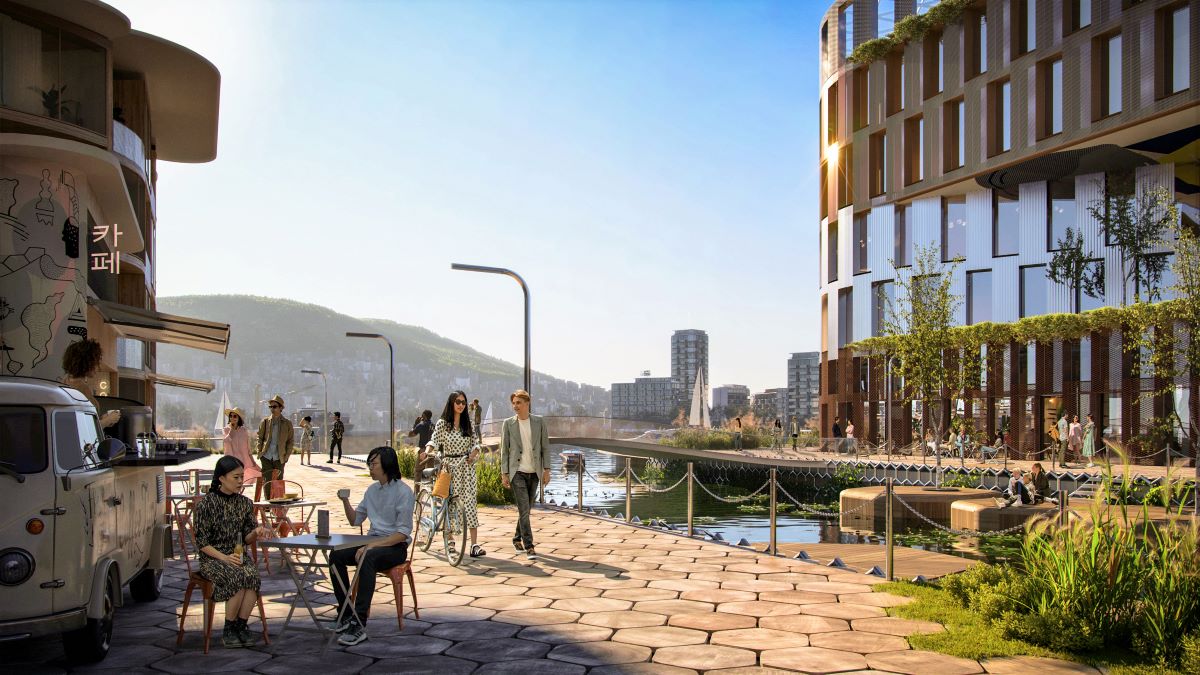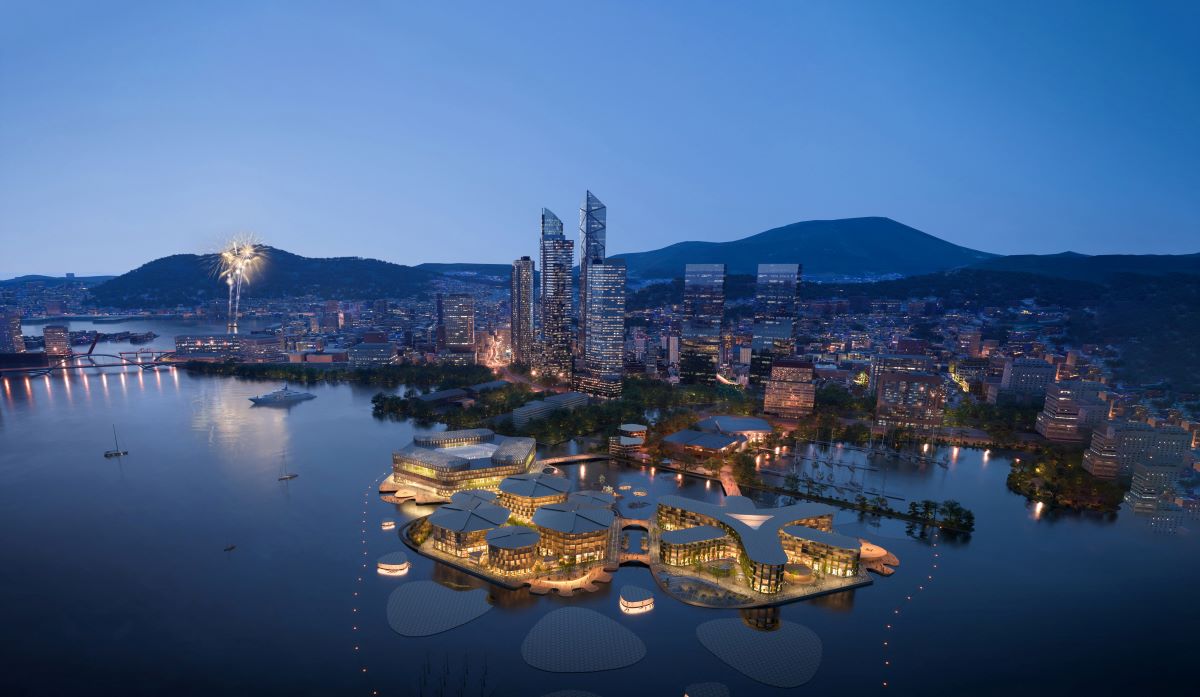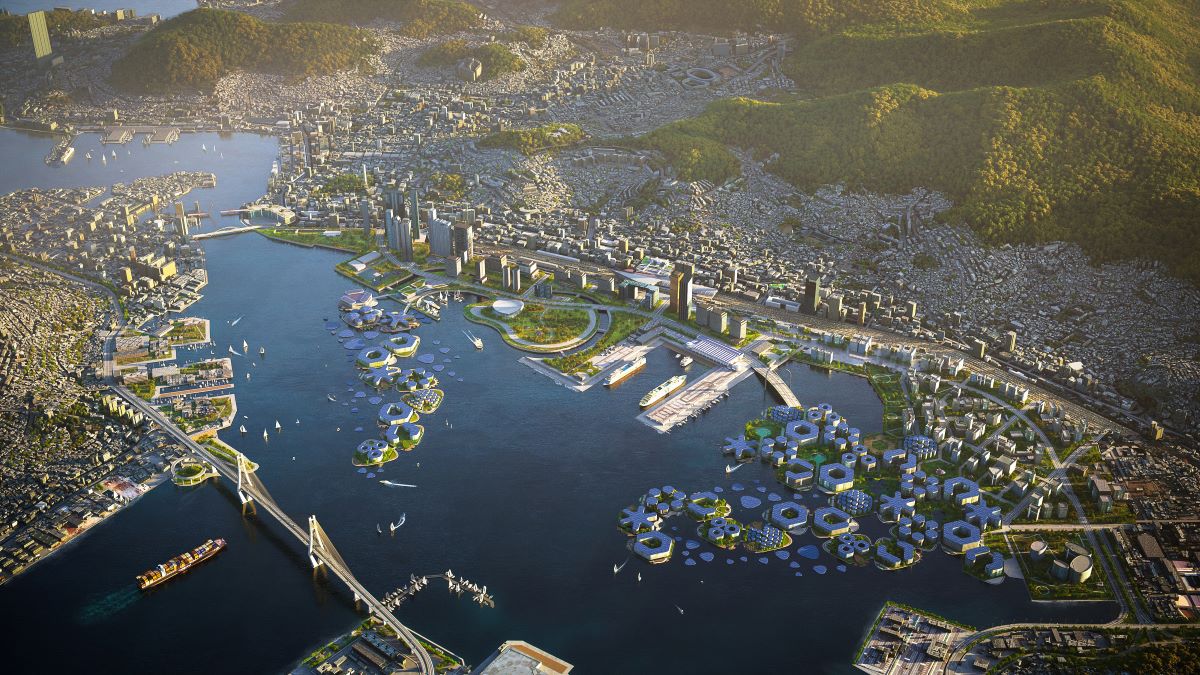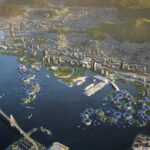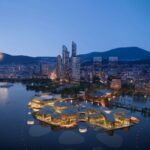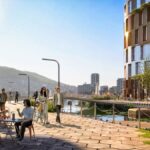OCEANIX, this brand new modular maritime neighborhood, is a prototype for sustainable and resilient cities.
The rise of the sea level is one of the major challenges posed by climate change and it threatens to change life in coastal cities around the world irreversibly. Sea levels have already risen by about 21-24 centimeters since 1880 according to the US National Oceanic and Atmospheric Administration, while new reports and estimations point to a rise of up to half a meter by the end of the century.
The answer to this change of the global coastline is given by OCEANIX, the first floating city in the world. The ambitious plan implemented in Busan, South Korea consists of a series of interconnected neighborhoods on three platforms, ready to house 12,000 residents initially. With the prospect of building more than 20 platforms, the construction could reach a capacity of over 100,000 residents.
Covering an area of 30,000 to 40,000 m2, each platform has been designed with a clear objective: one will be for living, featuring various housing options and shops, the second will be a marine life research hub, introducing new jobs in the green economy, and the third will be reserved for visitors and will feature eco hotels and organic restaurants. After all, sustainability as well as safety are the two main axes at the heart of the design of the floating city.
The platforms will be connected to each other and to the harbor by bridges, and all structures will be lower than seven stories. This way the structures can have a low center of gravity and remain resistant to all types of natural disasters, including category 5 typhoons.
Oceanix Busan is designed to generate 100% of the energy required for its operation using its own water treatment, urban wastewater, recycling and agricultural systems in an urban environment. The construction cost is estimated to reach $200 million and is expected to be completed by 2025.
Photos OCEANIX/BIG-Bjarke Ingels Group


